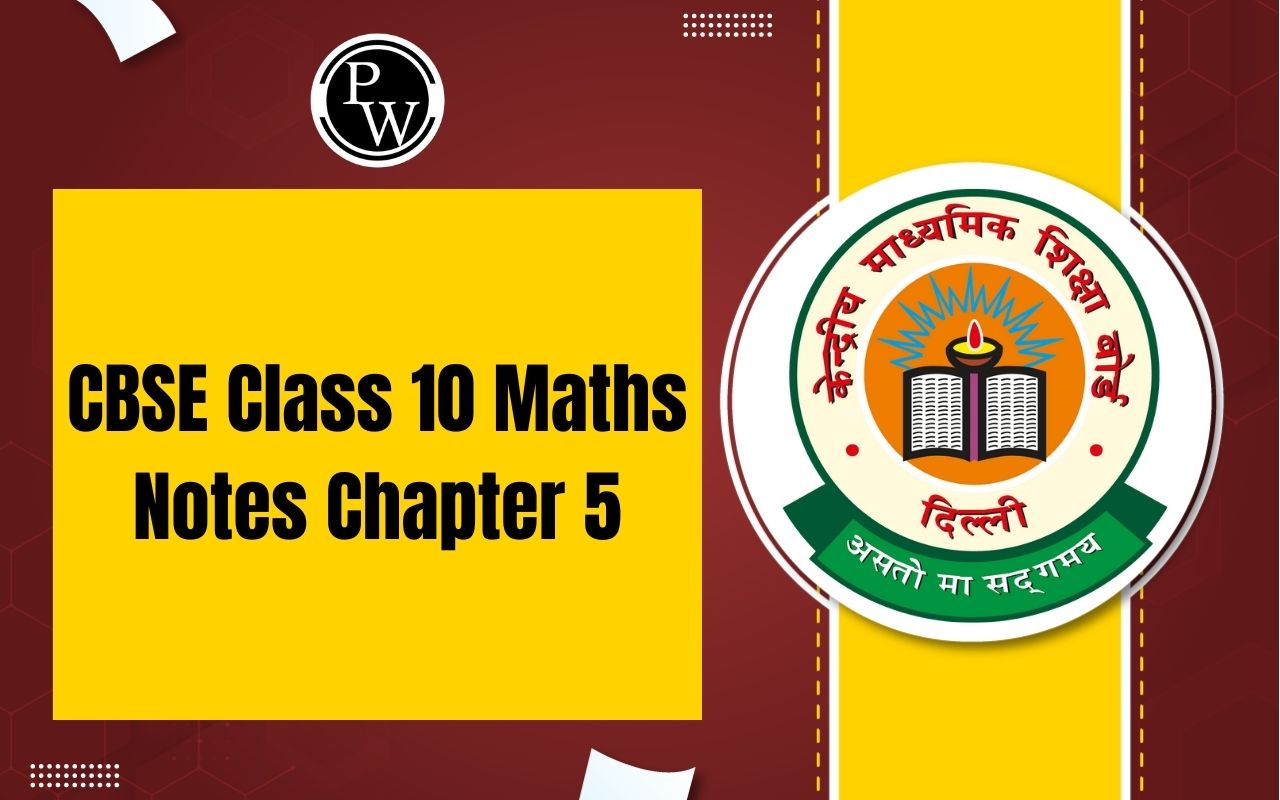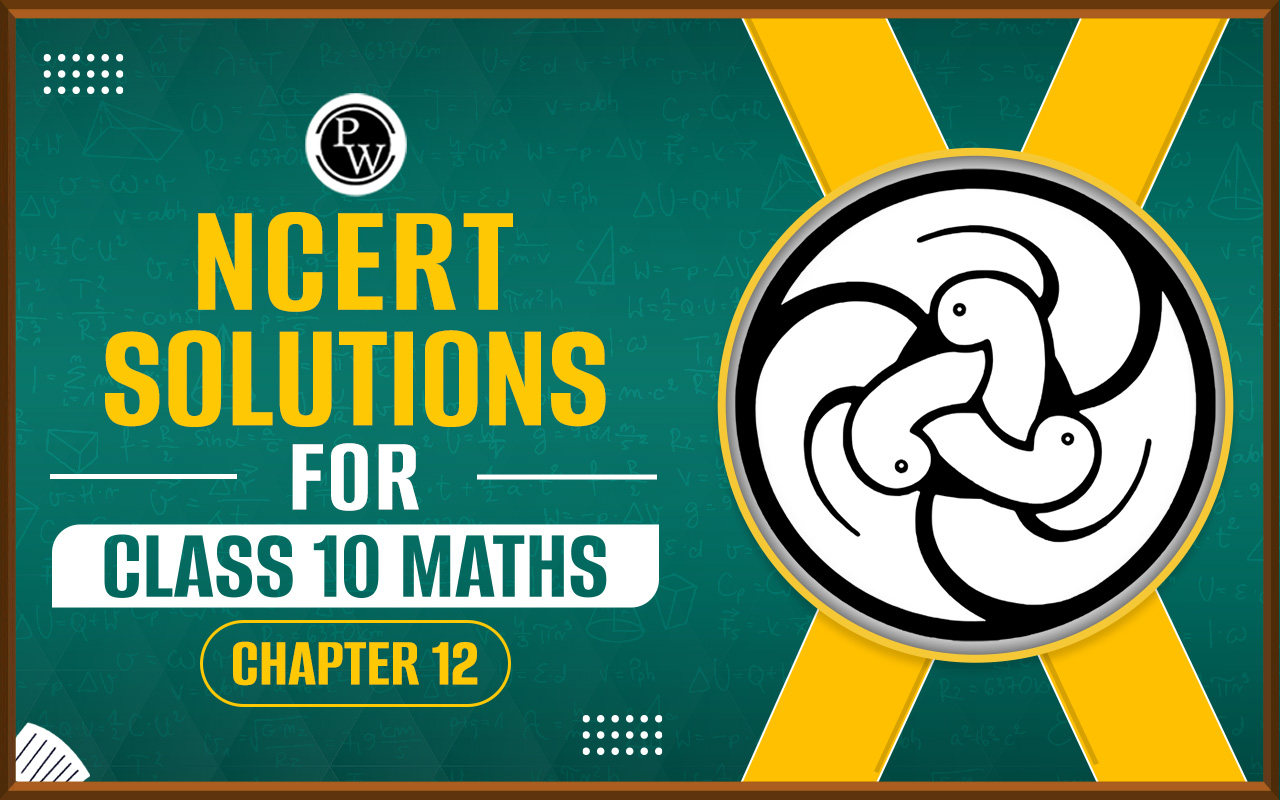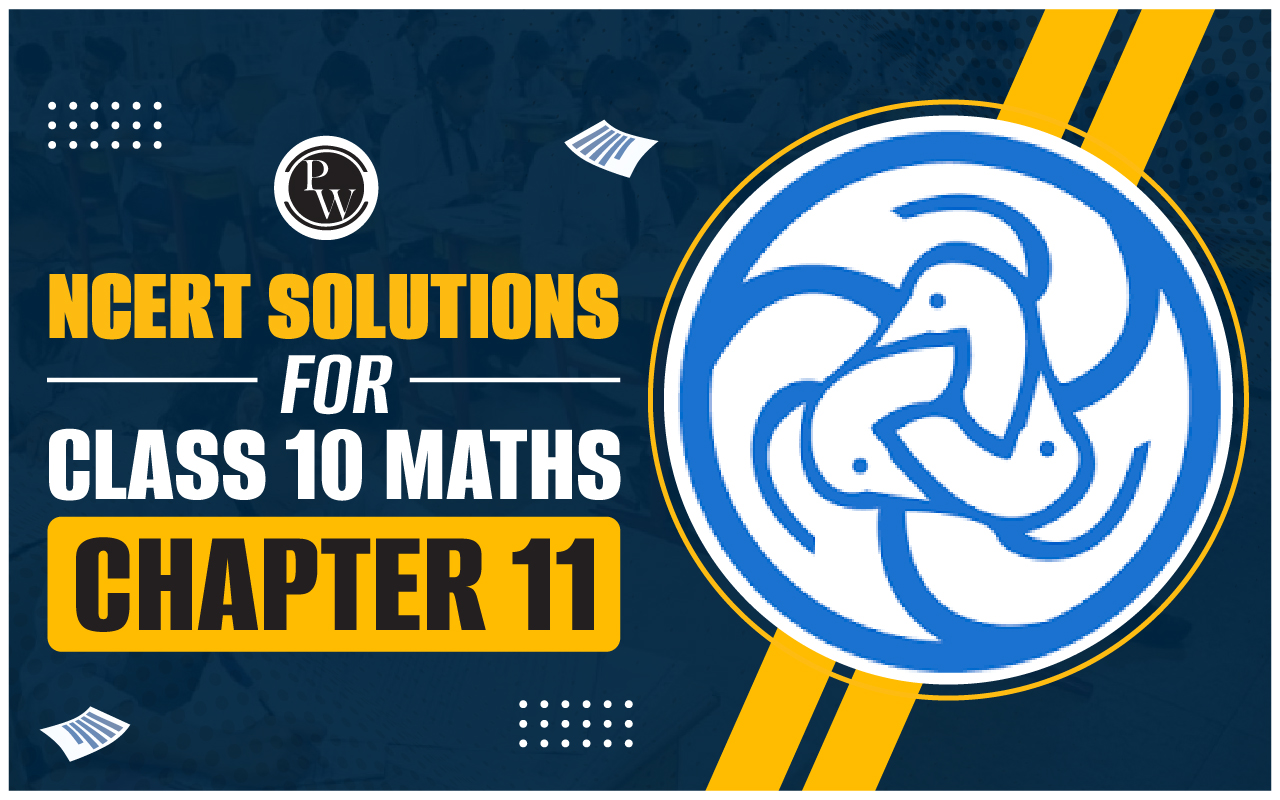

CBSE Class 10 Maths Notes Chapter 5: Arithmetic Progression, commonly abbreviated as AP, is a fundamental concept in mathematics. It refers to a sequence of numbers in which the difference between any two consecutive terms remains constant.
This difference is known as the common difference, denoted by 'd'. In an AP, each term can be obtained by adding the common difference to the preceding term. For example, the sequence 2, 5, 8, 11, 14 forms an arithmetic progression with a common difference of 3. Arithmetic Progressions find extensive applications in various real-life scenarios, such as calculating simple interest, population growth, and many more. Understanding APs is crucial for students as it forms the basis for more advanced mathematical concepts.CBSE Class 10 Syllabus 2024-25
CBSE Class 10 Maths Notes Chapter 5 Arithmetic Progression PDF
You can find the notes for Chapter 5 on Arithmetic Progression in CBSE Class 10 Maths by clicking on the PDF link provided below.CBSE Class 10 Maths Notes Chapter 5 Arithmetic Progression PDF
CBSE Class 10 Maths Notes Chapter 5 Arithmetic Progression
Sequences, Series and Progressions
A sequence is a list of numbers that follows a specific pattern, which can be either finite or infinite. For instance, 1, 2, 3, 4, 5... represents an infinite sequence of natural numbers. A series, on the other hand, is the sum of the elements in a sequence. For example, 1 + 2 + 3 + 4 + 5... is the series of natural numbers. Each number in a sequence or series is termed as a term. A progression is a type of sequence in which the general term can be expressed using a mathematical formula. In a finite sequence, terms are typically represented as a1, a2, a3, ..., an, where 1, 2, 3, ..., n denotes the position of the term. The series, being the sum of sequences, is represented as a1 + a2 + a3 + ... + an. In an infinite sequence, terms are usually represented as a1, a2, a3, a4, ... and the infinite series is depicted as a1 + a2 + a3 + ....Arithmetic Progression
An arithmetic progression (AP) is a sequence where the difference between consecutive terms remains constant. In an arithmetic progression, the first term is denoted by "a," the last term by "l," the common difference between terms by "d," and the number of terms by "n." The standard form of an arithmetic progression is represented as a, a + d, a + 2d, a + 3d, a + 4d, and so on. For instance, consider the infinite arithmetic progression 2, 5, 8, 11, 14... Here, the first term (a) is 2, and the common difference (d) is 3. This common difference is calculated by subtracting consecutive terms: 5 - 2 = 3, 8 - 5 = 3, 11 - 8 = 3, and 14 - 11 = 3. Since the difference between each pair of consecutive terms remains constant at 3, the given sequence qualifies as an arithmetic progression.Common Difference
Finite and Infinite AP
A finite arithmetic progression (AP) is one in which the number of terms is limited or finite. For instance, the sequence 2, 5, 8...32, 35, 38 is a finite AP since it has a definite number of terms. On the other hand, an infinite arithmetic progression (AP) is one that continues indefinitely, with no limit on the number of terms. For example, the sequence 2, 5, 8, 11... is an infinite AP as it goes on endlessly without a last term. A finite AP will eventually reach a last term, while an infinite AP continues indefinitely without a last term.General Term of AP
In an arithmetic progression (AP), the term in the nth position is denoted by an, where 'n' represents the position of the term in the sequence. The formula to find the nth term (Tn) of an AP is given by Tn = a + (n - 1)d, where 'a' is the first term, 'd' is the common difference, and 'n' is the position of the term. For example, let's find the tenth term of the arithmetic progression 2, 7, 12, … Given: First term (a) = 2 Common difference (d) = 5 We need to find the 10th term (n = 10). Substituting the values into the formula: T10 = 2 + (10 - 1) * 5 T10 = 2 + 9 * 5 T10 = 2 + 45 T10 = 47 Therefore, the 10th term of the given arithmetic sequence 2, 7, 12, … is 47.The General Form of an AP
The general form of an A.P is: ( a, a+d,a+2d,a+3d……) where a is the first term and d is a common difference. Here, d=0, OR d>0, OR d<0The Formula for the Sum to n Terms of an AP
The sum to n terms of an A.P is given by: S n = n/2( 2 a + ( n − 1 ) d ) Where a is the first term, d is the common difference and n is the number of terms. The sum of n terms of an A.P is also given by Sn= n/2(a+l) Where a is the first term, l is the last term of the A.P. and n is the number of terms.Finding the Sum of n Terms of an AP:
Determine the sum of the first 22 terms of the Arithmetic Progression 8, 3, -2, …. Here, the given arithmetic progression is 8, 3, -2, … So, the first term, a = 8 Common difference, d = -5 I.e., 3 – 8 = -5 -2 – 3 = -5 And, n = 22. Now, substitute all these values in the formula: S = (n/2)[2a+(n-1)d] S = (22/2)[2(8) + (22-1)(-5)] S = 11 [16 + (21)(-5)] S = 11[16 – 105] S = 11[-89] S = -979 Therefore, the sum of the first 22 terms of the given AP is -979.Arithmetic Mean (A.M)
Basic Adding Patterns in an AP
In an Arithmetic Progression (AP), the sum of two terms equidistant from either end remains constant. For instance, in the sequence 2, 5, 8, 11, 14, 17..., the sum of the first term (T1) and the sixth term (T6) equals 19, as does the sum of the second term (T2) and the fifth term (T5), and so forth. This can be expressed algebraically as Tr + T(n−r) + 1 = constant. The sum of the first 'n' natural numbers is calculated using the formula: Sn = n(n+1)/2. This formula is derived by treating the sequence of natural numbers as an AP, with the first term (a) equal to 1 and the common difference (d) equal to 1. For example, to find the sum of the first 10 natural numbers: Given n = 10, Substitute the value in the formula, Sn = n(n+1)/2, S10 = [10 (10+1)]/2, S10 = [10(11)]/2, S10 = 110/2, S10 = 55. All the formulas related to Arithmetic Progression class 10 are tabulated below:| First term | a |
| Common difference | d |
| General form of AP | a, a + d, a + 2d, a + 3d,…. |
| nth term | a n = a + (n – 1)d |
| Sum of first n terms | S n = (n/2) [2a + (n – 1)d] |
| Sum of all terms of AP | S = (n/2)(a + l) n = Number of terms l = Last term |
Benefits of CBSE Class 10 Maths Notes Chapter 5 Arithmetic Progression
CBSE Class 10 Maths Notes Chapter 5 Arithmetic Progression provide several benefits for students:Simplified Understanding: The notes simplify complex concepts related to arithmetic progression, making it easier for students to comprehend.
Comprehensive Coverage: The notes cover all important topics and concepts of arithmetic progression, ensuring students have a thorough understanding of the subject matter.
Improved Recall: By providing essential points and explanations, the notes aid in better retention and recall of important information.
Time-saving: Students can save time by referring to these notes, which consolidate information in a concise and organized manner.
CBSE Class 10 Maths Notes Chapter 5 FAQs
What is an arithmetic progression (AP)?
How is the common difference of an AP calculated?
What is the nth term of an arithmetic progression?
How do you find the sum of the first 'n' terms of an AP?
What is the arithmetic mean?












